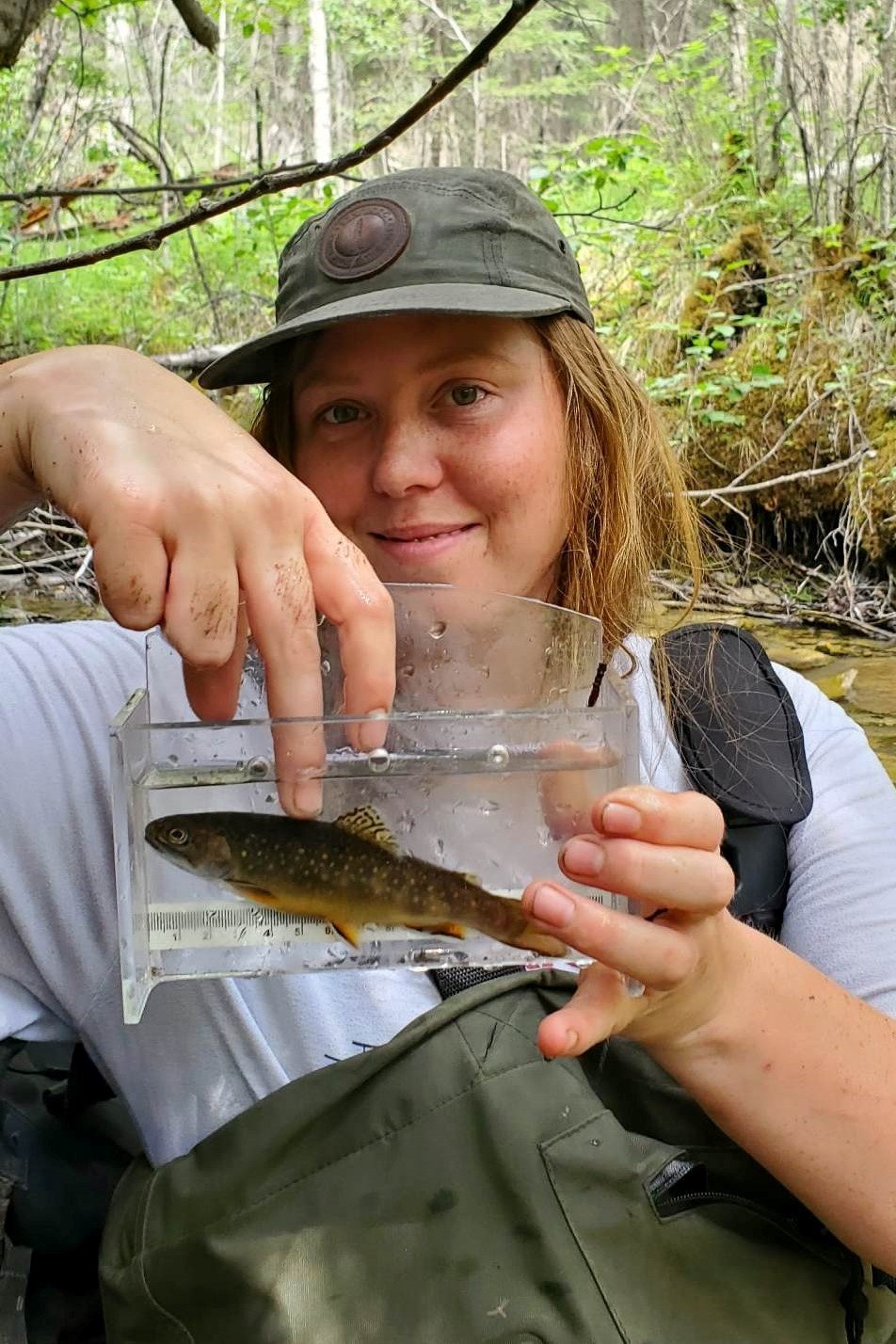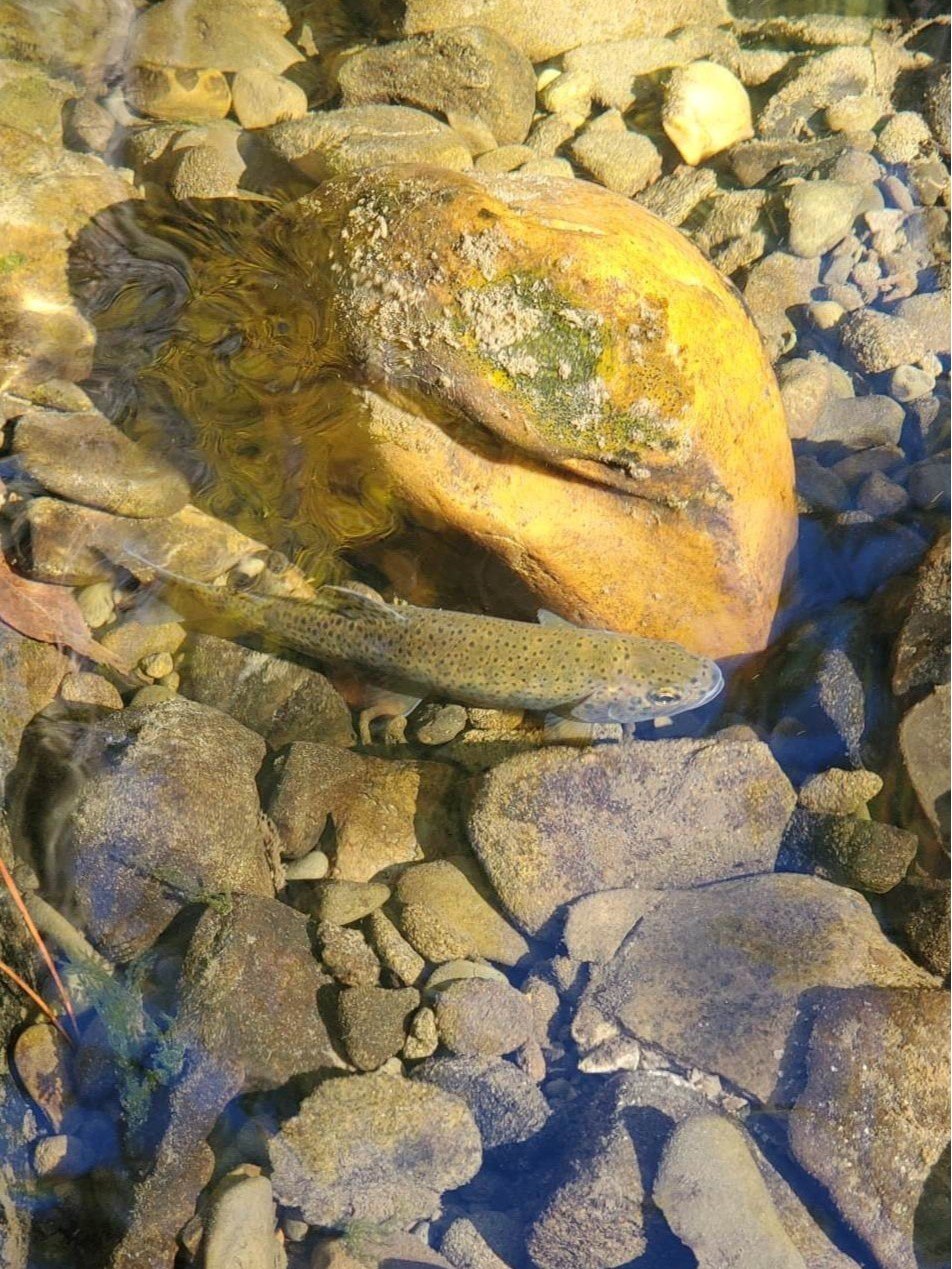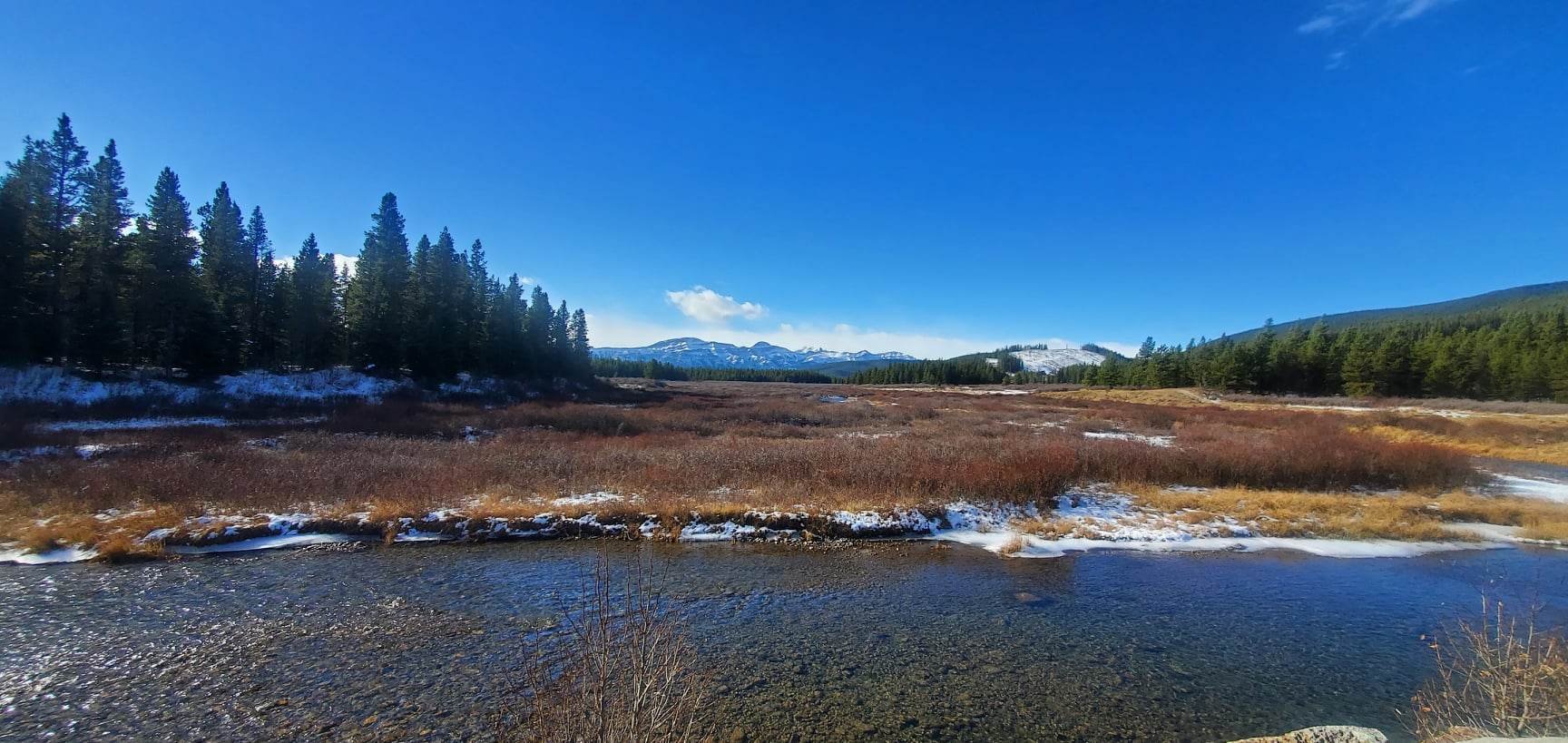Blog Post - eDNA
THE RESULTS ARE IN: DOES eDNA WORK AS WELL AS ELECTROFISHING?
Last summer (2022) we conducted a project on behalf of Hinton Wood Products that would compare the efficacy and efficiency of Environmental DNA (eDNA) and electrofishing in determining Species at Risk in the eastern slopes of Alberta.
The Project
We selected 84 culverts previously identified as fish passage barriers within Critical Habitat for Species at Risk. At each location there were three methods employed; eDNA sample collection, single-pass electrofishing, and a fish habitat assessment.
eDNA in the context of fish species is DNA that has been shed from an organism into the water. Filtered water samples are sent to a lab and analyzed for species-specific genomic assays. In this case: Athabasca Rainbow Trout.
Our research questions:
Field Notes
From experience, there are pros to both. eDNA is quick and less invasive: no walking through streams or handling fish. And, where some streams are unfishable, whether water levels are too low for the electrofisher’s anode ring, or too flooded to wade through - from beaver dams, usually - taking water samples for eDNA is nearly as simple as filling up a bottle.
Electrofishing, however, offers a more investigative look at habitat and behavior. Fish are caught via an electric field, which momentarily stuns their motor skills, allowing for capture with a net. They are processed by recording species, weight, length, and life stage and then photographed (as per our research license).
Sometime during the process of catching hundreds of fish over some 84 streams, we became fine-tuned in identifying all things aquatic. We recognized swim lines in the sand and the intricate detail in color and pattern on each species. Most memorable were the cool, undercut banks where we found our best rainbows; promising log jams that revealed the flicker of a white underbelly; juvenile brook trout camouflaged in shallow riffles; and burbot, the strangest of boreal fish with a whisker-like barbel, at the bottom of a silty, slow-moving channel.
Electrofishing offers an experience one couldn’t learn from a lab report.
Research Challenges
Environmental factors (low water levels, beaver ponds, extensive blowdown) made it so not every stream could be both electrofished and eDNA sampled, so in the end, a comparison was drawn between 72 out of 84 streams.
Electrofishing Method
Results
IDENTIFYING SPECIES AT RISK - ATHABASCA RAINBOW TROUT
Of all 72 streams that were both electrofished and eDNA sampled, the final lab report showed that eDNA sampling was able to identify the presence of Rainbow Trout in every stream where they were caught, plus, in streams where we were unable to catch them!
BUDGET
Electrofishing has high costs of equipment and labor, while eDNA costs primarily come from lab analysis fees. Taking into account all costs: mileage, crew wages, equipment vs. lab and shipping fees, and research licenses, the winner in all categories was eDNA.
EFFICIENCY VS. EFFORT
Two crew members are required for backpack electrofishing - one person to operate and one to net fish. On a typical day, two streams are completed. Effort depends on factors such as stream type (bigger stream = more seconds) and amount of fish caught (more fish = longer processing time). Electrofishing is also physically demanding.
On the other hand, one person can eDNA sample ~ 8 streams per day, depending on proximity. All it requires is three bottles to collect water, a thermometer for stream temperature, and a cooler to keep samples cool in the truck. The second portion involves filtering water samples through a fine mesh which in turn collects DNA. In the clear headwaters of the foothills, filter times can range from 2-12 minutes, but it isn’t unheard of for filtering to last half an hour per bottle.
Conclusion
Does eDNA compare to electrofishing? Turns out it’s a resounding YES - and perhaps has implications for a transition in the industry.
This project was funded by the Forest Resource Improvement Association of Alberta (FRIAA)









